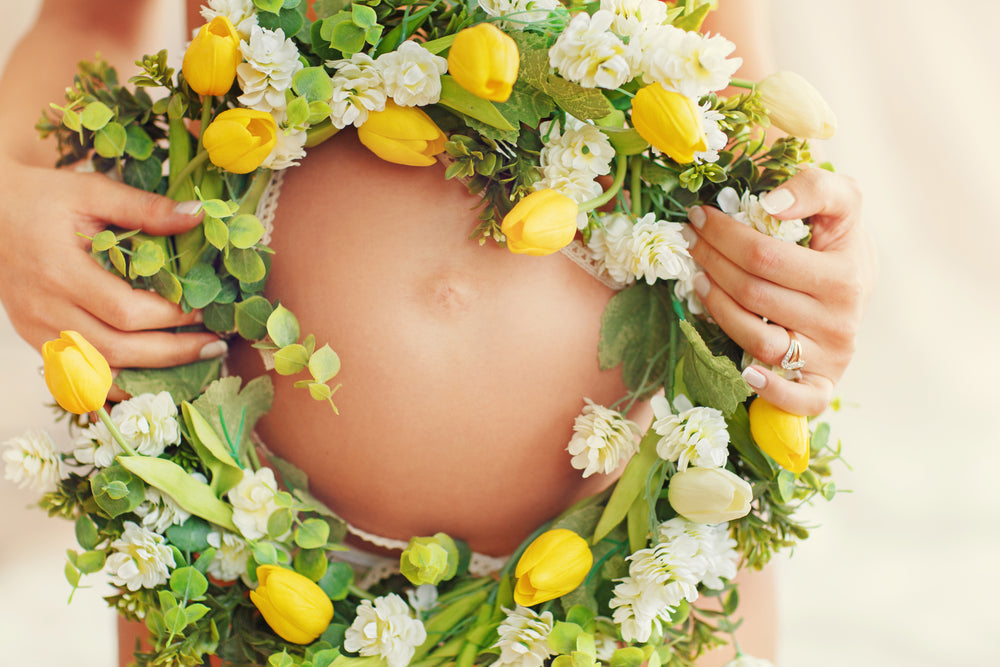
Can Perimenopause Cause Breast Lumps? Here’s What You Need to Know
Perimenopause can feel like nature's way of reminding you that your body is…well…still full of surprises.
You might have already noticed some changes in your body during this transition, and one thing that might catch your attention is the development of breast lumps or discomfort.
Yes, perimenopause can indeed cause breast lumps and that achy feeling of tenderness. Here's the science behind why that happens, and what you can do to feel better quickly.
Why Perimenopause Affects Your Breasts
The truth is that your body is going through a complete rollercoaster of hormonal changes during perimenopause. The levels of estrogen and progesterone, two key hormones involved in your reproductive system, start to fluctuate. These hormones don’t just regulate your menstrual cycle; they also affect your breast tissue.
When estrogen levels rise and fall inconsistently, it can cause changes in your breast tissue.
This can result in:
- Swelling
- Tenderness
- Lumps that feel soft or rubbery to the touch
It’s important to note that these breast lumps are typically non-cancerous and are often part of what’s called fibrocystic breast changes.
Fibrocystic changes can lead to lumps that move easily when you press on them. But, just because something is common doesn’t mean it’s any less uncomfortable. And it certainly doesn’t mean there is nothing you can do about it.
How Hormones Influence Breast Tenderness
Estrogen, that wild card of a hormone, is notorious for making things grow. This includes your breast tissue. As your estrogen levels fluctuate during perimenopause, you may notice your breasts feeling fuller, lumpier, and more tender than usual.
On the other hand, progesterone, which is supposed to keep estrogen in check, starts playing hide and seek as well. Without enough progesterone to balance out the estrogen, your breasts may become more tender and develop lumps. It’s like a hormonal tug-of-war happening right there in your chest.
These fluctuating hormones also influence fluid retention, making your breasts feel even more swollen. You might notice that some days are worse than others—one day, your bra fits just fine, and the next day, it feels like a medieval torture device.
Should You Be Concerned About Breast Lumps?
While most breast lumps that appear during perimenopause are benign, it’s always better to err on the side of caution. If you notice a new lump, here are a few things to keep in mind:
- Fibrocystic breast lumps tend to feel smooth and moveable, like little peas under your skin.
- If a lump feels hard, doesn’t move, or is accompanied by other symptoms like skin changes or nipple discharge, get it checked by a healthcare provider.
- Keep track of when you feel the lumps. If they fluctuate with your menstrual cycle, they’re likely hormone-related.
Getting regular mammograms and doing self-exams can help you stay on top of any changes that are concerning. It’s your body—be sure to pay attention to her! Again, err on the side of caution and contact your healthcare provider with any new lumps.
Ways to Ease Breast Discomfort
If breast lumps and tenderness are a consistent issue for you, our Tender Loving Breast Cream could be just what you need.
Our luxuriously soothing cream is packed with botanicals including anti-inflammatory concentrated cabbage extract—yes, cabbage, the unsung hero of breast health. It also contains cooling cucumber and grape seed extracts, and lavender essential oil for added comfort.
You’ve probably heard of cabbage leaves being used to reduce breast swelling, especially during breastfeeding. Well, the science behind cabbage’s anti-inflammatory properties work wonders during perimenopause to help decrease swelling and the microcirculation of fluid balance.
Recent research has identified microRNAs, such as miRNA172a, in cabbage extract that makes it a stand out ingredient for swelling. These small RNA molecules regulate gene expression and can inhibit the production of pro-inflammatory cytokines, thereby reducing swelling and inflammation at a cellular level.
By applying it directly to your breasts as often as needed, you can help soothe and reduce tenderness, swelling, and even the feeling of lumps.
What Else You Can Do To Find Comfort
While you can’t stop perimenopause from happening (as much as we all wish we could), there are ways to manage the discomfort that comes with it, especially when it comes to your breasts. Here are a few additional tips:
Topical Treatment: Cabbage extract creams like TLB by CaboCréme are a great option to reduce pain and inflammation naturally. These creams are more effective than traditional cabbage leaves, as they provide concentrated anti-inflammatory properties without the mess or hassle.
Over-the-counter pain relief: Acetaminophen or ibuprofen can help reduce pain and inflammation.
Wear a well-fitting bra: You’d be surprised how much support can help alleviate pain. Make sure you’re wearing the right size. (It might be time to get measured again!)
Apply cold compresses: Depending on your level of discomfort, a cold compress can reduce swelling and painfulness.
Limit caffeine: There’s some evidence that reducing your intake of caffeine can help with breast tenderness and fibrocystic changes.
Practice relaxation techniques: Stress can worsen hormonal fluctuations, so finding ways to relax might help reduce breast pain.
Perimenopause brings with it a host of changes, and your breasts aren’t immune to the hormonal tidal waves coming in and out of your life right now. Just keep in mind that it won’t last forever.
While breast lumps and tenderness can be unsettling, they’re often just another sign of your body’s transition, and we’re here to help you get to the other side.
Keep an eye on any changes and talk to your healthcare provider about anything unusual to give you peace of mind. After all, your body deserves some extra care as you head into your best years ahead!




